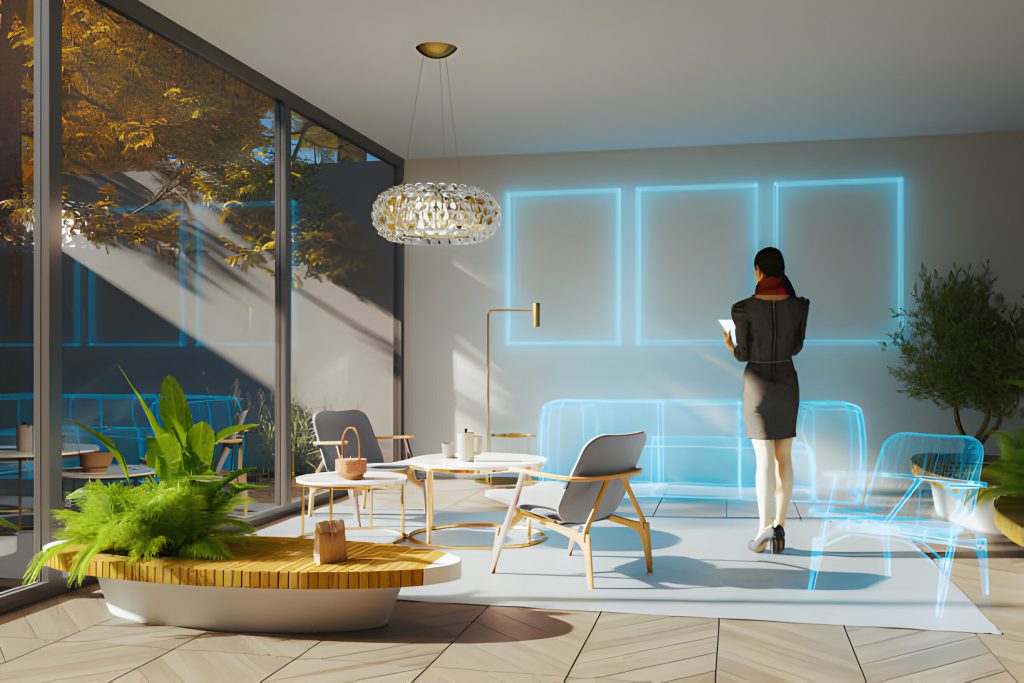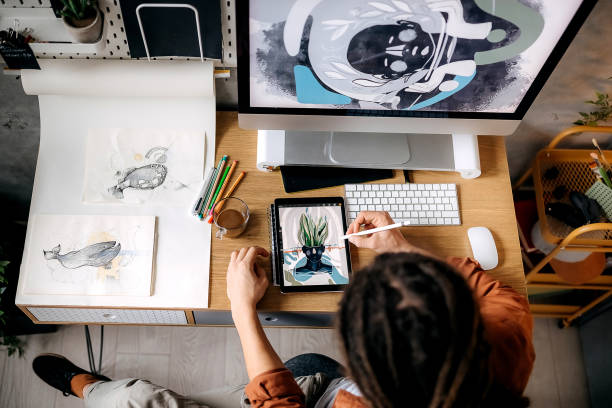Digital art is altering interior design by combining creative thinking with technological advances to produce dynamic, unique environments. This special intersection not only improves the aesthetic value of spaces, but it also offers new functionality, making art an essential aspect of everyday life. As digital art becomes more accessible and diversified it enables the modification of places to demonstrate different preferences and moods, encouraging a stronger bond between individuals and their living or working settings. Likewise, the arrival of interactive and environmentally friendly digital artworks provides the path for more ecologically conscious design strategies that create enjoyable experiences. Let us look at the increasing influence of digital art on interior design, namely its potential to tailor, develop, and add value to spaces in manners that traditional art forms cannot.

The Digital Revolution in Interior Design
The deployment of digital art into interior design represents a substantial shift in our perception and interaction with our homes and work environments. Unlike traditional artistic forms, electronic art has exceptional variety and adaptability, allowing designers to bring places to life and motion. This electronic transition enables a more customized setting in which art is experienced rather than just viewed, changing static spaces into dynamic, fascinating landscapes.
Personalization at Its Peak
One of the most significant effects of digital art on interior design is the amount of customization it provides. Digital platforms allow users to customize artworks based on the decisions they made, color schemes, and even mood preferences. This adaptability implies that interior spaces may now more properly represent the person’s character, resulting in a stronger bond between the occupant and their surroundings. The capacity to rapidly modify and replace digital artwork allows interiors to evolve alongside human growth and change.
Interactive Spaces: A new Frontier
By incorporating interactive components into interior design, digital art pushes beyond traditional limitations. These interactive works of art turn environments into sensory overload, ranging from artworks that alter depending on the viewer’s perspective to installations that interact with motion or sound. This interaction not only improves the aesthetics of a place, but it also encourages participation, which renders it more dynamic and engaging.
Sustainability and Digital Art
In an era where people are more concerned about sustainability, digital art provides an environmentally responsible alternative to traditional materials. computer art eliminates the requirement of real materials such as paint, canvas, or frames, reducing waste and the detrimental ecological impact of art creation. Furthermore, digital displays use minimal energy, particularly with advances in LED technology, which led to a greener way of approaching interior design.
Elevating Corporate and Public Spaces
Digital art is not limited to residential interiors; it has additionally made a huge impact in corporate and public areas. In the workplace, digital exhibits may encourage creativity, relieve stress, and enhance corporate identification. Public venues, including airports and malls, use large-scale digital art to improve the attractiveness of the environment and provide visitors with unique experiences.
The Economic Value of Digital Art
Beyond its visual and sensory appeal, digital art has a distinct economic worth. As an entirely novel industry, digital artworks, particularly those validated by blockchain technology as Non-Fungible Tokens (NFTs), might increase in value over time. This element creates an investments potential, making purchasing media art more than merely a design option.
Educational Opportunities and Cultural Preservation
Digital art in interior design provides opportunities for instructing and preserving culture. Interactive graphic displays may function as instructional tools, bringing insights into art history, cultural practices, and even scientific principles. Furthermore, digitization enables the replication and preservation of historical artworks, therefore increasing cultural accessibility and mitigating heritage losses.

At last, digital art has redefined interior design, busting down traditional limitations and providing unprecedented freedom and engagement. Its capacity to personalize areas, promote sustainability, and improve both private and public settings represents an enormous change in how we perceive our surroundings. Beyond its visual appeal, digital art provides commercial prospects, educational benefits, and a way to conserve cultural history. As technology progresses, the incorporation of electronic art into interior settings will become more compelling and inventive. This confluence of art and technology not only enhances our living spaces, but it also expands opportunities for creativity and involvement in interior design. The adventure of digital art in reshaping interiors is just getting started, pointing to a future in which our environments reflect thee cutting-edge junction of art, technology, and individual expression.







